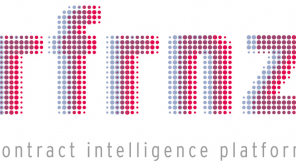von Nico Kuhlmann
A recently published paper presents the findings of a joint project, conducted by the World Economic Forum and McKinsey & Company, which studied the impact of emerging technologies – artificial intelligence, augmented reality, virtual reality and blockchain – on the creative economy. The project team conducted more than 50 interviews with experts from Asia, Europe and North America, as well as three workshops in China and the United States with World Economic Forum constituents. Given the varying maturity of the different technologies, it is too early to definitively state how they will change the creative economy. But this paper outlines opportunities and concerns for each technology and presents suggestions for where attention could be concentrated if the benefits are to be realized.
The key findings are as follows:
Artificial intelligence (AI) is changing value chains for creative content from start to finish, which is having positive and negative impacts on society.
AI helps creators more effectively match content with audiences by learning and classifying users’ preferences, thus enabling providers
to recommend specifically tailored content. AI is being used to create content in creative industries, including music, art, fashion and film. It can likewise aid production by performing tasks that are too difficult or time-consuming for humans. These positive advances are disrupting value chains across the creative economy, but they also have negative impacts. For example, disinformation and misinformation on social media are exacerbated by algorithms that encourage viral sharing. As a result, the appropriate level of responsibility of AI developers is being debated.
Augmented and virtual reality (AR/VR) can transform storytelling and the way content is experienced, but business incentives to do so may not fully align with individual well-being.
AR and VR – immersive technologies – can dramatically alter the experience of content consumption. They have the capacity to promote new and meaningful feelings, skills and understanding, which can make content more powerful than when presented through traditional media. As the cost of immersive technology decreases, creators are enabled to redefine storytelling and narrative content in an entirely new medium. In the current environment, consumers are spending an increasing amount of their leisure time using screen-based devices. Given that immersive technology has the potential to be more engaging and capture more intimate personal data from users, there are risks that the business incentives of developing immersive media may run counter to practices that protect individual well-being.
The creative economy and the platform economy are converging, redefining the relationship between creators, publishers and technology companies, and introducing difficult governance issues.
Publishers can use technology to expand audiences, but technology platforms – companies that match businesses with customers – also have a large impact on the way content is discovered. A few providers are responsible for the majority of referral traffic, and just five companies take in almost 80% of global mobile advertising revenue. This is redefining the relationship between publishers and platforms. As platforms become more involved in editorial decisions (influencing and deciding what type of content is seen and why), publishers’ accountability moves towards technology platforms. Frameworks for governing this new dynamic are not yet sufficiently developed.
Blockchain is the least advanced of all the technologies – while it holds promise for the creative economy, it requires further development.
Blockchain is exciting many creators because of its potential to change the control artists have over their work, in particular remuneration, production rights, third-party monetization and data transfer of creative work. However, not enough use-cases exist to be confident in the ability of the technology to promote positive change. In addition, the costs of developing these use-cases, in terms of resources and inertia, may be too high to be feasible for creative applications.
Multistakeholder collaboration is required for change to be effective.
There are reasons to be excited by the adoption of emerging technologies in the creative economy, but also some negative implications that are worth considering. Initiatives exist that try to mitigate harmful outcomes, but addressing them in isolation may leave important voices out of the conversation. The World Economic Forum is providing a platform for the public and private sectors, as well as academics and civil society, to come together and address the issues holistically. In many cases the Forum’s Center for the Fourth Industrial Revolution is at the forefront of the discussions. At the same time, there is always room for more informed debate, and recommendations of where attention could be concentrated have been provided for each technology.
Read the full paper here: Creative Disruption: The impact of emerging technologies on the creative economy




